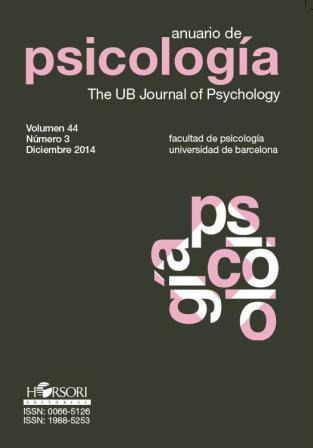Perceived effectiveness of emotion regulation strategies in sadness and joy
Paraules clau:
Self-regulation, interpersonal emotion regulation, joy, sadnessResum
This study examines the use of 43 emotion regulation strategies in episodes of joy and sadness in self- and interpersonal regulation conditions. After recalling interpersonal experiences of sadness and joy, 324 college students replied to the Questionnaire on emotional intrapersonal and interpersonal regulation (CIRE-43) and to a scale of perceived attainment of adaptive goals as a result of the use of the strategy in the episode (perceived effectiveness). As expected, the participants reported regulation of the positive emotion, but withless frequency than in the case of sadness; similar to former studies, selfregulation was found to be more frequent than interpersonal regulation. The analysis of the correlation pattern between perceived effectiveness and the different strategies shows that participants consider different strategies to be adaptive in the different conditions: depending on the emotion (sadness or joy) and on the target (self-regulation or regulation of the other person). The strategies that imply personal growth were considered to be more adaptive overall.Descàrregues
Publicades
2015-12-03
Número
Secció
Articles
Llicència
El/la autor/a que publica en esta revista está de acuerdo con los términos siguientes:
El/la autor/a cede en exclusiva todos los derechos de propiedad intelectual al/la editor/a para todo el mundo y toda la duración de los derechos de propiedad intelectual vigentes aplicables.
El/la autor/a puede difundir una copia de sus artículos respetando la política de acceso libre de la revista.


